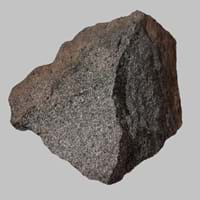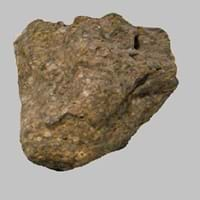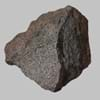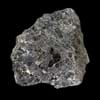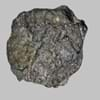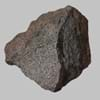Definition
Websterite is ultramafic and ultrabasic rock that consists of roughly equal proportions of orthopyroxene and clinopyroxene. It is a special type of pyroxenite.
Tuff is a type of rock made of volcanic ash ejected from a vent during a volcanic eruption
Origin
Webster, North Carolina
Italy
Discoverer
Unknown
Unknown
Etymology
From the town of Webster located in North Carolina
From a Latin word tophous then in Italian tufo and finally tuff
Class
Igneous Rocks
Igneous Rocks
Sub-Class
Durable Rock, Hard Rock
Durable Rock, Medium Hardness Rock
Other Categories
Coarse Grained Rock, Opaque Rock
Fine Grained Rock, Opaque Rock
Texture
Clastic, Granular, Phaneritic, Porphyritic
Clastic, Pyroclastic
Color
Black to Grey, Bluish - Grey, Dark Greenish - Grey, Green, Light Greenish Grey
Brown, Grey, Yellow
Durability
Durable
Durable
Scratch Resistant
Yes
Yes
Appearance
Layered, Banded, Veined and Shiny
Dull, Vesicular and Foilated
Interior Uses
Countertops, Decorative Aggregates, Entryways, Floor Tiles, Flooring, Interior Decoration
Decorative Aggregates, Entryways, Flooring, Homes, Interior Decoration
Exterior Uses
As Building Stone, As Facing Stone, Garden Decoration, Paving Stone
As Building Stone, As Facing Stone, Garden Decoration, Office Buildings, Paving Stone
Other Architectural Uses
Curbing
Curbing
Construction Industry
As Dimension Stone, Building houses or walls, Cement Manufacture, Construction Aggregate, for Road Aggregate
Building houses or walls, Construction Aggregate
Medical Industry
Not Yet Used
Not Yet Used
Antiquity Uses
Artifacts
Artifacts, Monuments, Sculpture, Small Figurines
Commercial Uses
Cemetery Markers, Commemorative Tablets, Creating Artwork, Laboratory bench tops, Jewelry, Sea Defence, Tombstones
Creating Artwork
Types
Not Available
Welded tuff, Rhyolitic tuff, Basaltic tuff, Trachyte tuff, Andesitic tuff and Ignimbrite.
Features
Generally rough to touch, Is one of the oldest rock
Always found as volcanic pipes over deep continental crust
Archaeological Significance
Monuments
Not Yet Used
Used
Famous Monuments
Data Not Available
Easter Island in the Polynesian Triangle, Pacific Ocean
Sculpture
Not Yet Used
Used
Famous Sculptures
Data Not Available
Data Not Available
Pictographs
Not Used
Used
Petroglyphs
Not Used
Used
Figurines
Not Yet Used
Used
Formation
Websterite can be formed as cumulates in ultramafic intrusions by accumulation of pyroxene crystals at the base of the lava chamber.
Tuff is formed when large masses of ash and sand which are mixed with hot gases are ejected by a volcano and avalanche rapidly down its slopes.
Mineral Content
Amphibole, Augite, Bronzite, Chromite, Diopside, Enstatite, Garnet, Hornblende, Hypersthene, Magnetite, Pyroxene
Calcite, Chlorite
Compound Content
Aluminium Oxide, CaO, Chromium(III) Oxide, Iron(III) Oxide, Potassium Oxide, MgO, Sodium Oxide, Silicon Dioxide, Sulfur Trioxide
Hydrogen Sulfide, Sulfur Dioxide
Types of Metamorphism
Burial Metamorphism, Impact Metamorphism
Burial Metamorphism, Cataclastic Metamorphism, Contact Metamorphism, Hydrothermal Metamorphism, Impact Metamorphism, Regional Metamorphism
Types of Weathering
Biological Weathering, Chemical Weathering, Mechanical Weathering
Biological Weathering, Chemical Weathering, Mechanical Weathering
Types of Erosion
Chemical Erosion, Coastal Erosion, Glacier Erosion, Water Erosion, Wind Erosion
Chemical Erosion, Coastal Erosion, Glacier Erosion, Sea Erosion, Water Erosion, Wind Erosion
Grain Size
Coarse Grained
Fine Grained
Streak
White, Greenish White or Grey
White
Porosity
Less Porous
Highly Porous
Luster
Dull to Vitreous to Submetallic
Vitreous to Dull
Compressive Strength
Not Available
Cleavage
Irregular
Not Available
Toughness
Not Available
Not Available
Specific Gravity
3.2-3.5
2.73
Transparency
Opaque
Opaque
Density
3.1-3.6 g/cm3
1-1.8 g/cm3
Specific Heat Capacity
Not Available
Resistance
Impact Resistant, Pressure Resistant, Wear Resistant
Heat Resistant, Impact Resistant, Pressure Resistant, Wear Resistant
Deposits in Eastern Continents
Asia
India, Russia
Afghanistan, Armenia, Azerbaijan, Burma, Cambodia, China, India, Indonesia, Iran, Japan, Malaysia, Mongolia, Nepal, North Korea, Pakistan, Saudi Arabia, Syria, Taiwan, Thailand, Turkey, Vietnam, Yemen
Africa
South Africa
Cameroon, Cape Verde, Eritrea, Ethiopia, Kenya, Libya, Madagascar, Nigeria, Rwanda, South Africa, Sudan, Uganda
Europe
Germany, Greece, Italy, Scotland, Turkey
France, Georgia, Germany, Greece, Iceland, Italy, Netherlands, Poland, Portugal, Spain, United Kingdom
Others
Greenland
Antarctica, Hawaii Islands
Deposits in Western Continents
North America
Canada, USA
Canada, Costa Rica, Panama, USA
South America
Brazil, Colombia, Venezuela
Argentina, Bolivia, Brazil, Chile, Ecuador, Paraguay
Deposits in Oceania Continent
Australia
New Zealand, Queensland
Central Australia, Western Australia
Websterite vs Tuff Characteristics
Though some rocks look identical, they have certain characteristics which distinguish them from others. Characteristics of rocks include texture, appearance, color, fracture, streak, hardness etc. Websterite vs Tuff characteristics assist us to distinguish and recognize rocks. Also you can check about Properties of Websterite and Properties of Tuff. Learn more about Websterite vs Tuff in the next section. The interior uses of Websterite include Countertops, Decorative aggregates, Entryways, Floor tiles, Flooring and Interior decoration whereas the interior uses of Tuff include Decorative aggregates, Entryways, Flooring, Homes and Interior decoration. Due to some exceptional properties of Websterite and Tuff, they have various applications in construction industry. The uses of Websterite in construction industry include As dimension stone, Building houses or walls, Cement manufacture, Construction aggregate, For road aggregate and that of Tuff include Building houses or walls, Construction aggregate.
More about Websterite and Tuff
Here you can know more about Websterite and Tuff. The life cycle of a rock consists of formation of rock, composition of rock and transformation of rock. The composition of Websterite and Tuff consists of mineral content and compound content. The mineral content of Websterite includes Amphibole, Augite, Bronzite, Chromite, Diopside, Enstatite, Garnet, Hornblende, Hypersthene, Magnetite, Pyroxene and mineral content of Tuff includes Calcite, Chlorite. You can also check out the list of all Igneous Rocks. When we have to compare Websterite vs Tuff, the texture, color and appearance plays an important role in determining the type of rock. Websterite is available in black to grey, bluish - grey, dark greenish - grey, green, light greenish grey colors whereas, Tuff is available in brown, grey, yellow colors. Appearance of Websterite is Layered, Banded, Veined and Shiny and that of Tuff is Dull, Vesicular and Foilated. Properties of rock is another aspect for Websterite vs Tuff. The hardness of Websterite is 7 and that of Tuff is 4-6. The types of Websterite are Not Available whereas types of Tuff are Welded tuff, Rhyolitic tuff, Basaltic tuff, Trachyte tuff, Andesitic tuff and Ignimbrite.. Streak of rock is the color of powder produced when it is dragged across an unweathered surface. The streak of Websterite and Tuff is white, greenish white or grey. The specific heat capacity of Websterite is Not Available and that of Tuff is 0.20 kJ/Kg K. Depending on the properties like hardness, toughness, specific heat capacity, porosity etc., rocks are resistant to heat, wear, impact, etc.Websterite is impact resistant, pressure resistant, wear resistant whereas Tuff is heat resistant, impact resistant, pressure resistant, wear resistant.
